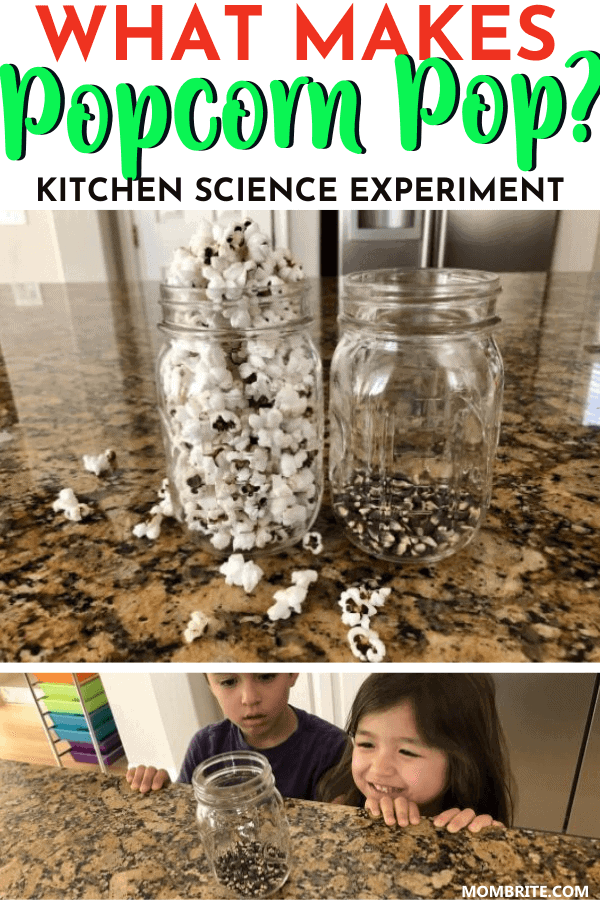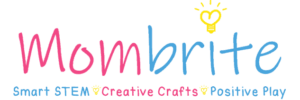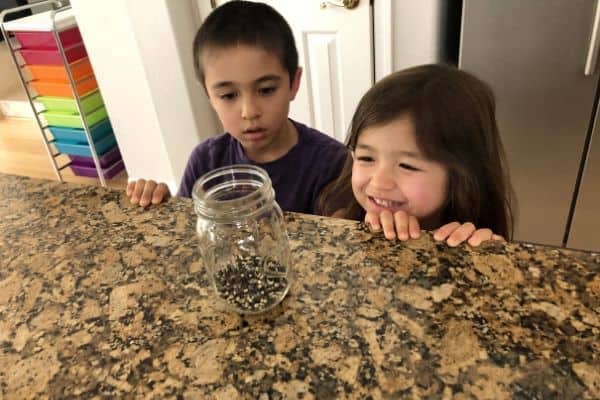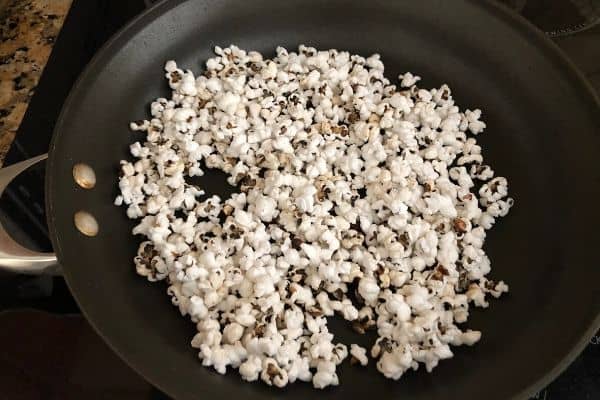Discover what makes popcorn pop in this popcorn science experiment. Your kids will love learning the science behind popping popcorn and why popcorn kernels pop.
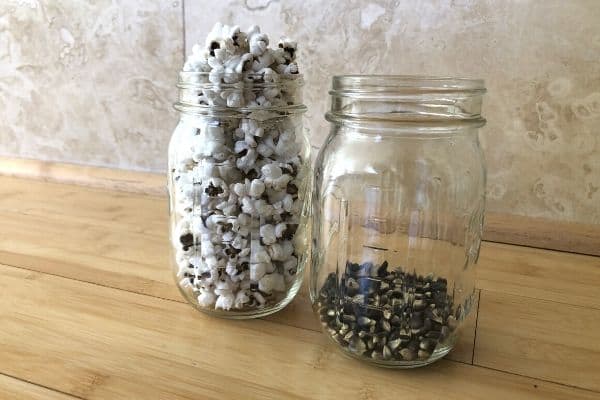
Ever since we did the melting Skittles experiment followed by making our own homemade butter, the kids are asking for more kitchen science experiments.
Since one of our favorite snacks is popcorn, we decided to explore the science behind what makes popcorn pop!
As a mom, I love making popcorn instead of buying the microwave popcorn at the grocery store because I know exactly what goes into the popcorn.
And as a nutrition coach, I definitely recommend homemade popcorn as a healthy snack. Popcorn is very nutrient-dense with high levels of polyphenols and antioxidants. Polyphenols are micronutrients found in plant-based food that can neutralize harmful free radicals and reduce inflammation.
Let’s get popping!
How to Make Homemade Popcorn on the Stovetop
This post contains affiliate links. Please see my full disclosure policy for details.
Materials:
- ¼ cup popcorn kernels (we used these heirloom black kernels because they are higher in antioxidant)
- 2 mason jars or glass containers that are the same size
- 2 tablespoons butter or oil (we used the homemade butter)
- Deep thick-bottomed pot (I used a deep frying pan and it worked too)
- Lid for the pot
- Optional: salt, cheddar cheese, honey, caramel, chocolate, or other flavors
Instructions:
- Measure and pour ¼ cup of popcorn kernels in one of the glass jars.
- Ask your kid to predict how many cups of popcorn you will make. For younger kids, you can simply ask if they think the popcorn will still fit in the jar after they pop.
- Heat the butter or oil in the pot or pan on medium-high heat.
- Add the popcorn kernels to the pot and cover with the lid. I recommend using a separate ¼ cup of popcorn kernels and leave the other ones in the glass jar for comparison purposes later.
- Wait for the kernels to pop.
- Occasionally slide the pot from side to side to get the oil moving.
- Once the popping slows to about one pop every 2-3 seconds, remove the pot from heat.
- Shift the lid so that there is a small gap for the steam to escape. Leave the pot for about a minute until the popping stops completely.
- Use a measuring cup or spoon, measure how many cups of popcorn are in the pot.
- Pour the popcorn in the other glass jar and set the glass jar side by side with the one containing the kernels.
- Compare the difference in volume.
- Pour the popcorn into a bowl.
- Optional: Add salt, herbs, sugar, or whatever toppings you would like to the popcorn.
- Serve and enjoy!
My kids loved the anticipation and squealed in joy when the popping started. That’s why I popped the kernels in a frying pan instead of a pot – it’s easier to see the popping action!
They are amazed at how the popped kernels take up so much more space than the unpopped ones. This is a great time to teach your kids about volume, or the amount of space that an object occupies.
Even though there is the same number of kernels in each jar, the popped kernels expanded so much that we can’t even fit all of them in the jar. Hence, changing the physical state of the kernel allowed it to take up more space.
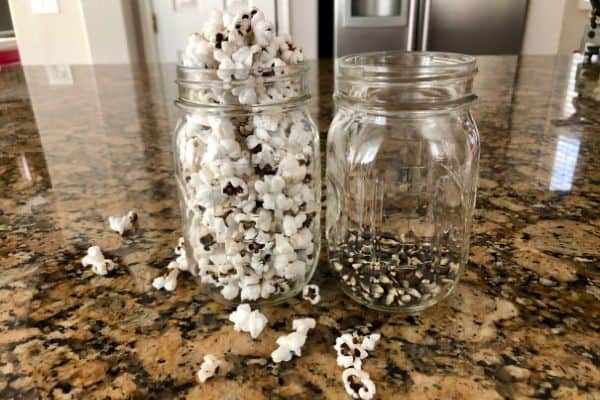
The Science Behind How Popcorn Pop
One of the simplest (and yummiest) experiments you can do is to pop a batch of popcorn and observe how it pops.
To understand how popcorn pops, you have to first understand what constitutes a popcorn kernel. Inside each kernel of popcorn is a tiny droplet of water and starch, which are surrounded by a tough outer shell known as the pericarp.
When you apply heat to the popcorn kernels by heating them on the stovetop or in a microwave, the water turns into vapor. The vapor creates pressure inside the shell and forces the hard shell to crack open. The starch breaks out of the shell and turns solid, which is the white, fluffy popcorn that we eat.
Here is a video showing popcorn exploding in slow-motion:
Science Extensions to Try
Your kids will love trying different extensions because they will get lots of popcorn to eat!
- Try popping the popcorn kernels in a microwave. Simply put the kernels into a paper bag and fold the top of the bag over a few times. Then put the paper bag in the microwave for about 2-3 minutes. Since microwaves have different sizes and strengths, listen carefully for the popping to slow down so that you know when the kernels have finished popping. Is the popcorn any different than when you made them on the stovetop?
- Try popping different varieties of popcorn. Do they taste different? Does one pop better than the others?
- Try popping with different oils like olive oil. Does one type of oil pop the kernels better than the others? Does one make the kernels pop faster?
- Try using a pot instead of a saute pan.
- Try setting your stovetop at different temperatures (medium instead of high, for example). Does it get hot enough to pop the kernels? If not, try to see what is the lowest temperature you can use to pop the popcorn.
- Think about what other objects occupy more space when their physical state changes. For example, a blown-up balloon.
Final Thoughts on the Popcorn Science Activity for Kids
Isn’t it fun to experiment with food? The homemade popcorn activity is especially great because you get to eat a healthy snack afterward!
After you make stovetop popcorn, you may never go back to the store-bought microwave popcorn again. Or at least your kids won’t let you because watching popcorn pop is so much fun!
